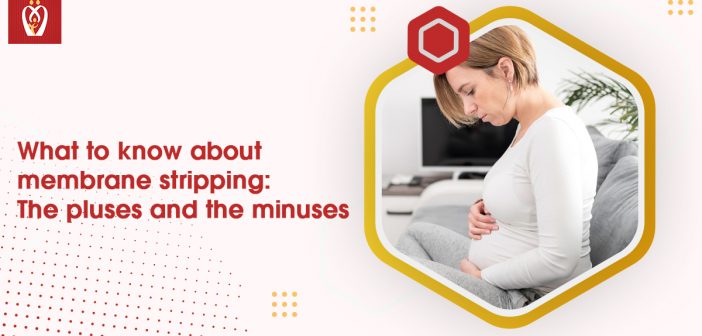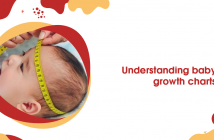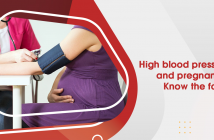While being pregnant has its perks (such as being able to eat as much ice cream as you want). There will come a time when you are completely over being pregnant. Most women will experience it around 37 weeks or whenever moving becomes difficult.
Some women, however, will remain pregnant for weeks after they reach that point. At your 40-week appointment, your GP/midwife may suggest that you consider induction because your baby is simply too comfortable in your womb. This is where the option of a membrane sweep may be presented for the first time.
A membrane sweep may sound gross and scary, but if you’re nearing (or past) full term and ready to evict your little angel by any means necessary, it might not be the worst idea for inducing labor.
Membrane stripping is a fairly common procedure, but is it as effective as it seems? To find out, continue reading this blog.

What is membrane stripping?
Membrane stripping (also known as membrane sweep) isn’t exactly a spa day. Membrane stripping is a mechanical method of inducing labor used between 38 and 40 weeks gestation to prevent post-term pregnancies (after 41 weeks gestation).
A GP/midwife will insert a finger into the cervix and sweep between the amniotic sac membranes to separate the sac. This action increases the endogenous production of oxytocin, prostaglandins, and phospholipase A, all of which help soften and dilate the cervix.
In layman’s terms, do you know how your doctor usually performs weekly cervix checks toward the end of your pregnancy to check effacement and dilation? A membrane sweep is similar to that.
Consider the female anatomy poster in your GP/midwife’s office. The cervix is the entrance point to the uterus. There’s the external orifice, which is where your doctor will insert the finger. Things get uncomfortable when the doctor has to reach for the internal orifice of the uterus where the bag of water is attached to the uterine wall.
Your GP/midwife will then gently sweep their fingers back and forth to separate the membranes from the uterine wall. The idea is that stripping membranes kick-starts labor, so unlike a medicated induction, your labor will start semi-spontaneously after a membrane sweep.
What are the positive signs of a membrane sweep?
After a membrane sweep, positive signs show that your body has responded well and that labor is progressing. The signs of a successful membrane sweep include:
- Contractions become more regular
- The loss of your mucus plug
- Water breaking
- Your cervix becomes more dilated
Membrane Sweep: Pros and Cons
-
Pros of Getting a Membrane Sweep
The information presented in various reports can be confusing. But if your body is ready for labor, stripping membranes will more likely induce labor. However, if done too soon, it may not work and may increase the need for other interventions later.
Stripping membranes is safe and poses few risks, according to research. Because a membrane sweep is a low-risk procedure, it is often promoted as a “natural” alternative to oxytocin or vaginal prostaglandin induction.
Another advantage of membrane stripping is that it can usually be performed in your healthcare provider’s office, as opposed to other pregnancy interventions, such as versions, which must be performed in the hospital.
-
Cons of Stripping Membranes
While they are rare, there are some risks involved with membrane stripping. When a woman’s membranes rupture at term, labor must be augmented if she is not already in active labor. Simply put, if the doctor accidentally ruptures the amniotic sac while stripping membranes, you may need an emergency c-section. However, this is a worst-case scenario. Doctors are more concerned about introducing bacteria into your cervix while stripping membranes, which could result in an infection that complicates labor and delivery.
Stripping may also include mechanical dilation of an unfavorable cervix. Because the cervix is highly vascular and bleeds easily during pregnancy, women may encounter light spotting following delivery.
What’s the final word on membrane stripping?
After 38 weeks, membrane stripping is most likely to be effective.
We understand. Pregnancy is difficult. When 37 weeks is considered full term, it’s tempting to schedule a membrane stripping procedure to help get that baby out of there as soon as possible.
Nonetheless, there is an astonishing amount of prenatal growth in the final weeks of pregnancy, so unless there’s a genuine medical need for a baby to be born sooner, it’s probably best for the baby to bake until at least 39 weeks.
There are times when a planned birth is the best option for everyone. However, military families may choose a scheduled induction so their partner can be present for the birth due to impending deployments.
Alternatively, a medical condition may need an early delivery in the best interests of both the mother and the baby’s health.
Finally, you and your doctor should make the decision to have your membranes stripped jointly. If you feel pressured to have a membrane sweep (or any procedure you don’t feel comfortable with during pregnancy).
you should definitely seek a second opinion because there are induction alternatives that may be just as effective at inducing labor as stripping membranes. After all, the most important thing is that your little nugget is happy and healthy when it comes for them to debut.
About Nurturey
You can get membrane sweep NHS information from Nurturey PinkBook. The PinkBook by Nurturey is a “digital substitute” for the NHS Red Book. Parents and pregnant women can use the PinkBook to access their child’s health records. Get reliable information about their pregnancy stage, and view upcoming health checkups from the NHS. If you have concerns about your pregnancy, use the Nurturey pregnancy app to make an appointment with your GP or midwife right away. Besides, you can schedule appointments, communicate with your doctor, and refill prescriptions.







